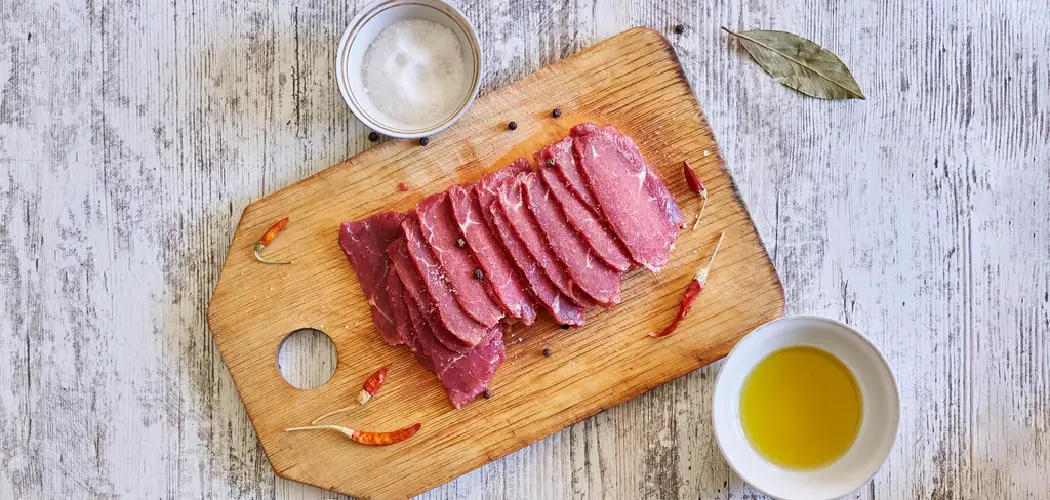If you’re like me, I love spending time in the kitchen. One of my favorite things is cooking a delicious meal for my friends and family. If you’ve ever used wood-burning tools to create a design on a cutting board, you know the importance of sealing the wood.
This blog post will show you how to seal wood burned cutting board. It’s an easy process, and your board will be protected from any liquid or food that may come in contact with it. Let’s get started!
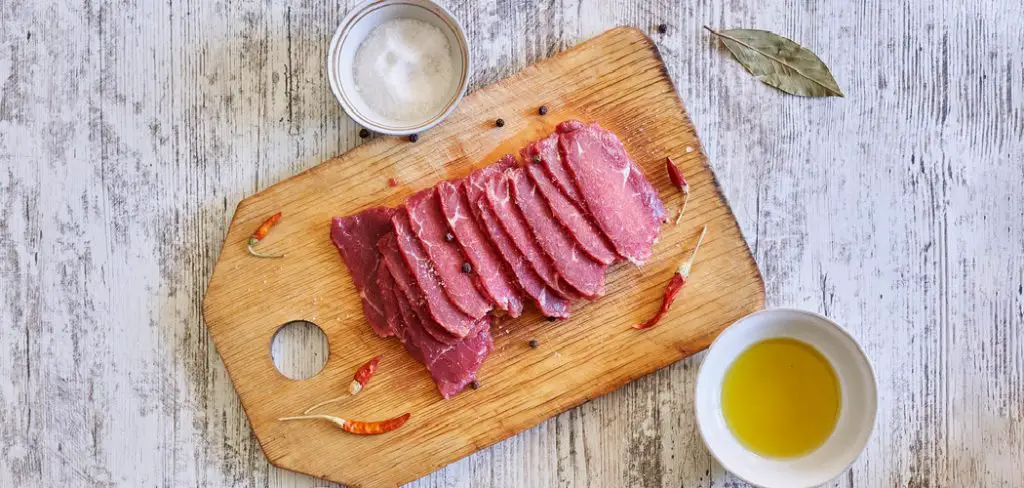
Summary: One way to seal a wood-burned cutting board is to cover it with clear lacquer. Others recommend using a polyurethane sealant or a mixture of equal parts beeswax and olive oil.
Why Sealing Wood Burned Cutting Board is Important?
- To protect it from water damage.
- To prevent the board from warping or cracking.
- Easier to clean and maintain.
- Less likely to harbor bacteria and other contaminants.
- Help preserve the wood grain’s natural beauty.
- Less likely to absorb food odors.
- Last longer and provide a better cutting surface.
- Easier to grip and provide a more stable cutting surface.
- Less likely to slip and slide during use.
Sealing your wood-burned cutting board is an essential step in protecting your investment.
10 Effective Methods on How to Seal Wood Burned Cutting Board
Method 1: With Polyurethane
Polyurethane is a clear finish often used to protect the wood from moisture and wear. It is available in several different finishes, including glossy and satin. Although you can apply it with a brush or a rag, it dries quickly.
To seal your wood-burned cutting board with polyurethane, start sanding down with fine-grit sandpaper. Then wipe away any dust with a damp cloth. Next, apply a thin layer of polyurethane to the board with a brush or rag. Let it dry for 2 hours before applying a second coat.
Method 2: With Mineral Oil
Mineral oil is a food-safe option for sealing wood-burned cutting boards. It penetrates the wood and helps to prevent moisture from damaging the board. You can find mineral oil at most drugstores or online.
To seal your board with mineral oil, start by wiping it down with a damp cloth. Then, apply a generous amount of mineral oil to the board and spread it evenly with a brush or rag. Let the board sit for at least 30 minutes so that the oil can penetrate the wood. Wipe away any excess oil before using the board.
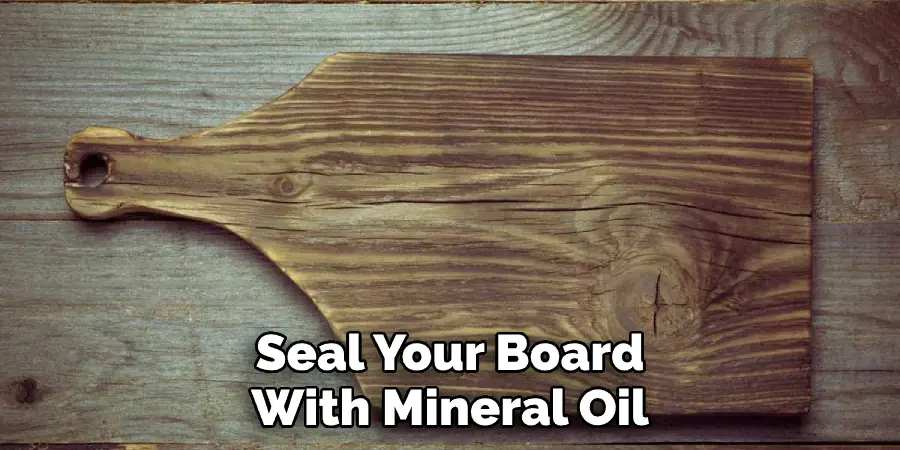
Method 3: With Beeswax
Beeswax is another food-safe option for sealing wood-burned cutting boards. It creates a barrier that helps to prevent moisture and bacteria from penetrating the board. You can find beeswax at most craft stores or online.
To seal your board with beeswax, start by melting the beeswax in a double boiler. Once it is melted, remove it from the heat and let it cool for a few minutes. Then, apply the wax to the board with a brush or rag. Spread it evenly and let it dry for at least 30 minutes. Finally, buff away any excess wax before using the board.
Method 4: With Coconut Oil
Coconut oil is a natural option for sealing wood-burned cutting boards. Like beeswax, it creates a barrier that helps to prevent moisture and bacteria from penetrating the board. You can find coconut oil at most grocery stores or online.
Heat the coconut oil on the stovetop or microwave. Use the cloth to rub the coconut oil into the wood-burned cutting board, working in small sections. Wipe away excess oil with a clean cloth. Allow the board to dry for 24 hours before using it.
Method 5: With Furniture Wax
You can use furniture wax to seal a wood-burned cutting board. This realistic option will protect your board and give it a nice sheen. Simply rub the wax onto the board’s surface with a clean cloth. Let it dry for at least an hour before using. But keep in mind to re-wax your board every few months to keep it protected.
Furniture wax is available at most hardware stores.
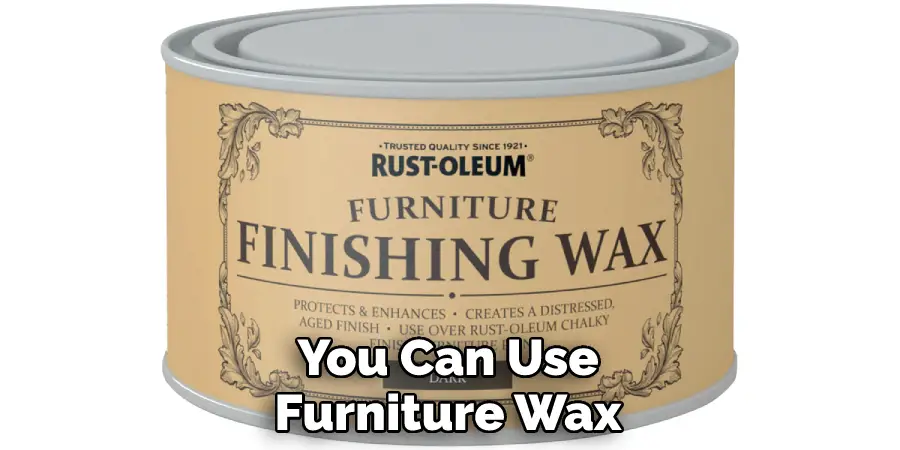
Method 6: With Olive Oil
Olive oil is the most common option for sealing wood cutting boards. All you need to do is pour a small amount of olive oil onto your board and then use a paper towel or clean cloth to spread it around. You’ll want to cover the entire surface, including the sides and edges. Once it’s coated, let it sit for at least an hour so the oil can soak in. Then you youuse a paper towel or clean cloth to wipe off any excess oil.
Olive oil does need to be reapplied every few months, so keep that in mind when using this method. But it’s a simple way to keep your wood cutting board in good condition.
Method 7: With Salt
A salt is a natural option for sealing wood-burned cutting boards. It helps to absorb moisture and prevent the board from warping. To use this method, simply sprinkle salt on the board and rub it in with a clean cloth. Let the board sit for an hour before wiping off the excess salt. You can then apply a food-safe oil to the board if desired. It is also important to note that this method should only be used on new commissions. Do not use salt on cutting boards that have already been seasoned.
Method 8: With Vinegar
This method is the most effective way to clean a wood-burned cutting board. Soak a cloth in vinegar and water, then scrub the cutting board. Rinse with warm water and dry with a clean towel. Repeat if necessary. To disinfect, mix equal parts vinegar and water. Rub the mixture onto the cutting board, rinse with warm water and dry with a clean towel.
Method 10: With Wax Paper
Wax paper is very much like the polyurethane method, except you’re using wax paper instead of a brush to apply the sealer. This is a good option if you don’t want to deal with brushes or clean up afterward.
Cut a piece of wax paper to fit over the cutting board. Pour a generous amount of sealer onto the wax paper. Use your hand to spread the sealer evenly over the cutting board’s surface. Let the sealer dry for at least 24 hours before using the cutting board. Once the sealer is dry, you can use the cutting board as standard.
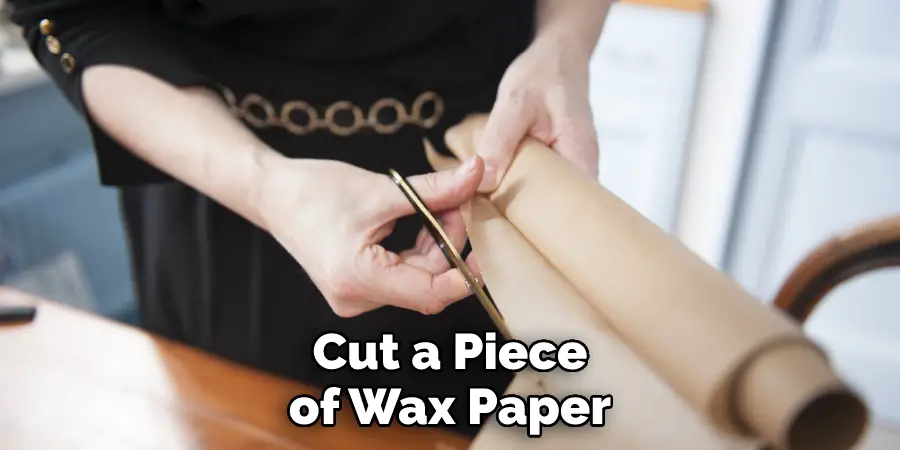
To seal your board with wax paper, start cutting a piece of wax paper that is slightly larger than your cutting board. Then, place the wax paper on top of the board and use an iron to heat it. The heat will cause the wax paper to melt and adhere to the board. Let the board cool for a few minutes before using it.
No matter which method you choose, it is essential to reapply the sealant regularly to keep your wood-burned cutting board in good condition. Once you have sealed your wood-burned cutting board, clean it after each use. Wash it with warm water and soap, then dry it thoroughly. Store it in a cool, dry place. Do not put it in the dishwasher or microwave. With proper care, your board will last for many years. Sealing your board will help it last for years to come.
Safety Precautions to Seal Wood Burned Cutting Board
You must follow some safety precautions while sealing your wood-burned cutting board.
- To clean your wood-burned cutting board, wipe it down with a damp cloth and mild soap. Avoid scrubbing the board too harshly, as this can damage the sealant.
- If you plan on using your board for food preparation, choose a food-safe sealant.
- Apply a thin sealant layer to your board and let it dry completely before using it. If you need to apply a second coat, wait at least 2 hours between coats.
- Always store your wood-burned cutting board in a cool, dry place. Avoid storing it in direct sunlight or near a heat source.
- Whether you’re using a new or pre-owned cutting board, it’s important to clean and disinfect it before use properly.
- Before sealing your wood-burned cutting board, ensure the surface is clean and debris-free.
- Sand the surface of your cutting board with medium-grit sandpaper. This will help create a smooth surface for the sealer to adhere to.
- Always wear gloves and a mask while working with chemicals. Make sure to work in a well-ventilated area.
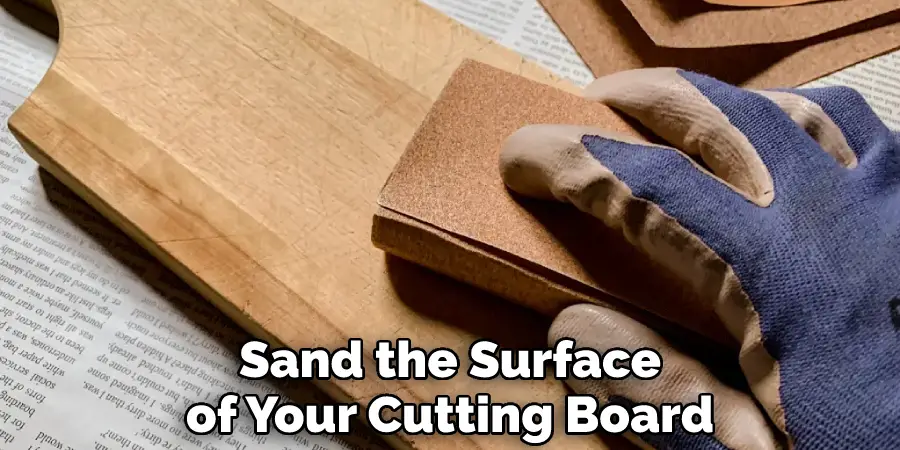
What Wood Finish is Food Safe?
Wood finish is an important factor to consider when it comes to protecting a wood-cutting board from wear, water damage, and other elements. When choosing a wood finish for food-safe use, there are a few things to keep in mind. One important consideration is the type of resin used in the finish. For food-safe finishes, look for finishes that use plant-based or natural oils. Examples include mineral oil, walnut oil, and tung oil.
Another important factor is the curing time of the finish. Many finishes need to be applied in multiple coats and require several days before they are fully cured (dried). For best results, look for a finish that can be applied in one coat, or with just a few coats, for a quicker curing time.
Finally, it’s important to ensure you use the right application process. For best results and maximum protection of the wood cutting board, use a sponge brush to apply a light, even coat of finish onto the surface.
What is the Best Finish for a
Wood Burned Cutting Board?
Wood cutting boards are essential for food preparation and make a wonderful addition to any kitchen. A wood-burned cutting board adds a unique, rustic look and is a great way to customize your board with custom designs and initials. However, it’s important to choose the right kind of finish for your wood-burned cutting board to ensure it is both beautiful and safe for food preparation.
Sealants are a popular choice for wood-burned cutting boards as they provide an extra layer of protection for the wood and can help it last longer. Polyurethane is a popular sealant for wooden cutting boards as it offers protection from water, heat and food contact. It also helps repel stains, making it easier to clean your cutting board after use.
Do You Have to Seal Wood After Burning It?
Sealing a wood-cutting board is important for preventing food contamination and keeping it looking good. It helps protect the wood from water damage and prevents bacteria, dirt, and grime from building up in the grain. Although burning a cutting board may be more aesthetically pleasing than leaving it unfinished, sealing the wood afterward is still recommended.
Sealing a wood-cutting board can be done with either mineral oil or food-grade wax. Mineral oil is the most common choice for sealing a wood cutting board because it’s natural, easy to apply, and non-toxic. It also helps preserve the wood and prevent it from cracking or warping over time.
How Often Should You Apply Sealant to a Wood Cutting Board?
It is important to regularly apply a sealant to a wood-cutting board in order to protect it from wear and tear. Generally, it is recommended that a wood cutting board be sealed with mineral oil or beeswax every three to four months. It is beneficial to use mineral oil because it can penetrate the wood and provide a protective layer against water, dirt, and germs.
To seal a wood cutting board, begin by cleaning it with gentle dish soap and warm water. Once the board is dry, spread mineral oil or beeswax generously over the surfaces of the board. Allow this to sit for 5-10 minutes before wiping any excess oil off with a cloth.
Conclusion
The food-safe mineral oil and beeswax mixture we used to seal our cutting board worked well. It was easy to apply and protected the wood from moisture and bacteria. We’ll continue to use this method on our other boards, and we recommend you do the same.
Now that you know how to seal wood burned cutting board go ahead and try it! Be sure to share your photos with us on social media so we can see your creations. And as always, if you have any questions, don’t hesitate to contact us for help.

